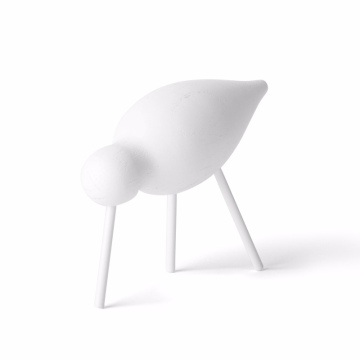Mastering Kakiage: A Guide to Traditional Japanese Tempura Fritters
Kakiage (かき揚げ) is a beloved Japanese dish that is often associated with tempura, the deep-fried fritter-style cooking method that has become a cornerstone of Japanese cuisine. Kakiage is a form of tempura but with a twist: rather than frying individual pieces of seafood or vegetables, kakiage is made by mixing ingredients like vegetables (and sometimes seafood) into a batter, and then deep-frying the entire mixture as a crispy fritter.
This unique fried treat is beloved in Japan for its crispy texture, umami-rich flavor, and versatility. It's enjoyed across the country, particularly in tempura restaurants, noodle shops, and as part of bento boxes. Like many traditional dishes in Japan, kakiage emphasizes seasonality, simple techniques, and a deep connection to the essence of ingredients.
The Origins of Kakiage: A Twist on Traditional Tempura
The origins of kakiage are rooted in the tempura tradition, which was introduced to Japan by Portuguese missionaries in the 16th century. The word tempura itself comes from the Latin word "quatuor" meaning "four," referring to the four days of fasting in the Christian calendar when people were allowed to eat fried foods. Over time, tempura became integrated into Japanese cooking, evolving into a sophisticated style of deep-frying that used seafood (particularly shrimp) and vegetables, and was served with a light batter to keep the dish crispy and delicate.
The invention of kakiage is believed to have emerged during the Edo period (1603–1868), when Japanese chefs began experimenting with the tempura technique. Kakiage differed from the classic tempura by mixing ingredients together before frying, creating a fritter-style tempura. This allowed for a more compact and crispy form of tempura, where the batter enveloped a mix of ingredients, creating a delightful textural contrast between the crunchy outside and the tender vegetables inside.
Some historians believe kakiage was a response to the growing demand for quick, convenient meals during the Edo period when tempura became a popular street food. Kakiage could be prepared quickly, and its nature allowed for a wide range of ingredients to be used, making it an affordable and savory delight that could satisfy many people at once.
The Culinary Evolution of Kakiage: A Traditional and Versatile Dish
Over time, kakiage has evolved and become an integral part of the broader tempura tradition in Japan. Though its basic preparation remains simple, there are countless variations that chefs create based on seasonal ingredients, regional preferences, and even personal styles. The key to perfecting kakiage lies in understanding the balance of textures and flavors and mastering the art of frying.
1. Batter and Frying Techniques:
The batter for kakiage is typically made with flour, water, and sometimes egg or cornstarch to achieve a light, crisp texture. The light batter helps retain the natural flavors of the vegetables and seafood inside, and its crispness is one of the defining features of the dish. The trick is to maintain a lightness in the batter while ensuring that it holds the vegetables together as a cohesive fritter.
2. Ingredient Choices:
Kakiage can be made with a wide variety of vegetables and seafood, with the most common ingredients including:
- Onion: Provides sweetness and depth.
- Carrot: Adds a mild sweetness and color.
- Sweet Potato: For a rich, creamy texture.
- Shiitake Mushrooms: Imparts an earthy, umami flavor.
- Leeks: Adds a subtle savory flavor.
- Shrimp or fish: When included, seafood brings a sweet and delicate flavor to the dish.
While the ingredients can vary, kakiage is often made using seasonal vegetables, which reflects the Japanese culinary principle of seasonality (shun). By using fresh, in-season produce, kakiage captures the essence of Japanese cooking—emphasizing the quality and natural flavors of the ingredients.
3. Seasoning and Accompaniments:
Once deep-fried, kakiage can be seasoned lightly with soy sauce, salt, or shichimi togarashi (a Japanese spice mix). It is commonly served as a topping for soba or udon noodles, where the crispy fritter adds a delightful contrast to the soft noodles. It can also be enjoyed with a bowl of rice or as part of a tempura donburi (a rice bowl topped with tempura). To enhance the flavor, dipping sauce (tentsuyu), a mixture of soy sauce, mirin, and dashi, is often provided on the side.
Kakiage in Japanese Culinary Culture: A Timeless and Convenient Favorite
Kakiage has become an essential part of Japanese home cooking, as well as a popular dish in tempura restaurants and noodle shops. It is appreciated for its ability to showcase the freshness of seasonal vegetables and its crispy texture, which is a hallmark of the tempura cooking style. Kakiage can be found in various forms across Japan, but it is particularly popular in tempura shops, where it may be served alongside other tempura items such as shrimp, squid, and vegetable tempura.
One of the reasons kakiage is so cherished in Japan is its versatility. It can be enjoyed as a standalone dish or as part of a more elaborate meal. It is especially popular during festive seasons and is often included in New Year’s celebrations, where it represents the abundance of the harvest and the joy of gathering with family and friends.
In addition to being served as part of noodle dishes and rice bowls, kakiage is also a common filling in bento boxes, where its crispy exterior and tender interior make it a popular choice for a meal on the go.
Mastering Kakiage: Tips for Perfecting the Dish
For those looking to master the art of kakiage, there are a few key culinary tips to ensure the dish is perfectly executed:
- Choose Fresh Ingredients: The vegetables and seafood you use should be fresh, as the flavors and textures will be more pronounced when fried. Seasonal vegetables are particularly well-suited for kakiage, as they bring out the best in the dish.
- Maintain a Light Batter: The batter should be light and airy to ensure that the kakiage is crispy without being heavy. Avoid overmixing the batter; the goal is to coat the ingredients lightly rather than drown them in batter.
- Control the Frying Temperature: The oil should be hot enough to quickly crisp the batter, but not so hot that it burns the ingredients inside. The ideal frying temperature for kakiage is around 350°F (175°C), which ensures a golden-brown and crispy exterior.
- Don’t Overcrowd the Pan: When frying, it’s essential not to overcrowd the pan. Fry the kakiage in small batches to ensure even cooking and to prevent the temperature of the oil from dropping too much.
- Drain Excess Oil: After frying, let the kakiage drain on paper towels to remove excess oil and maintain its crispy texture.
Conclusion: Kakiage – The Art of Tempura Fritters
Kakiage is a delightful and satisfying dish that beautifully showcases the principles of Japanese culinary artistry: seasonality, balance, and respect for ingredients. It offers a delicious combination of crispy texture, umami flavor, and versatility, making it a favorite in both casual and more refined settings. By mastering the art of kakiage, chefs and home cooks alike can experience the culinary joy of creating a dish that combines the elegance of tempura with the creativity of mixed vegetable fritters. Whether served atop noodles, in a rice bowl, or enjoyed on its own, kakiage continues to be a timeless favorite in the world of Japanese cuisine.






